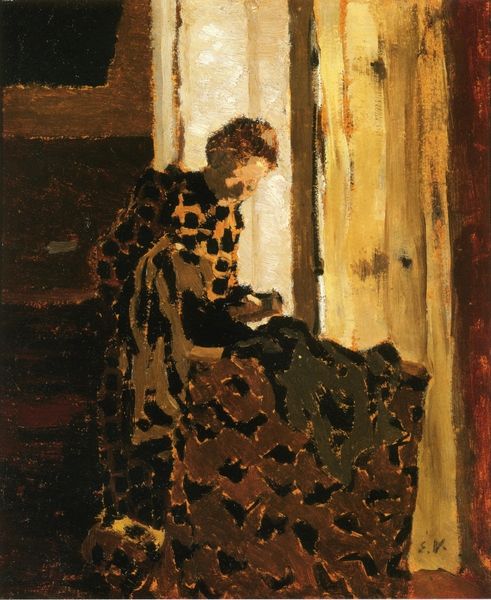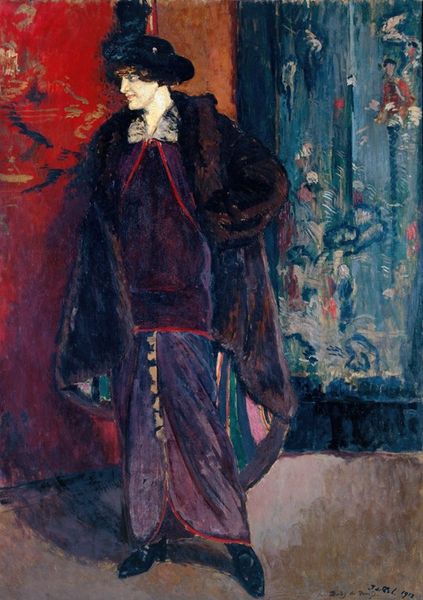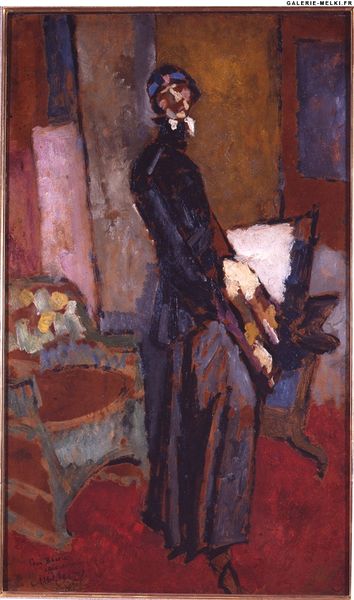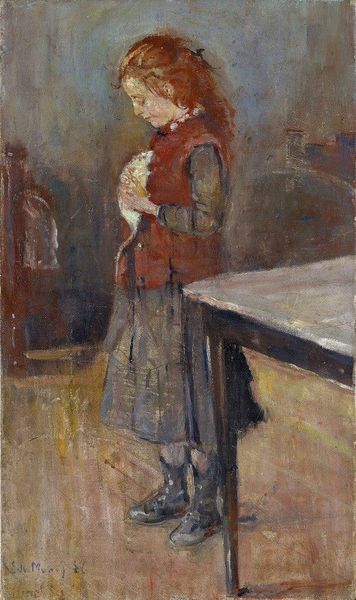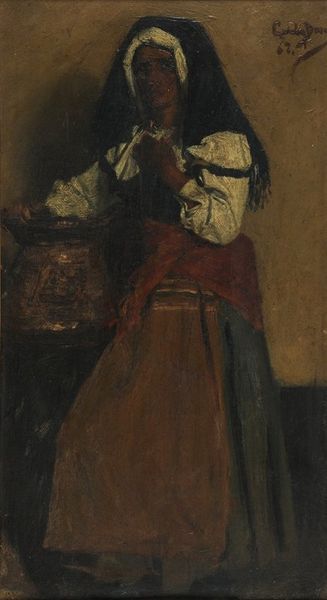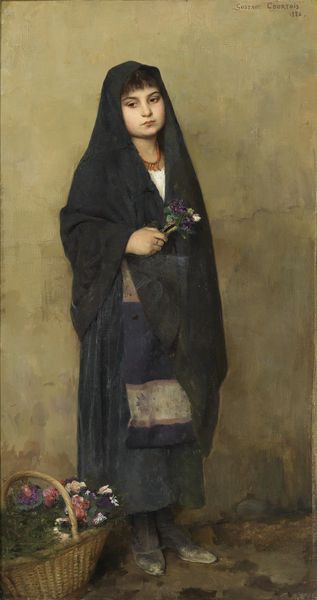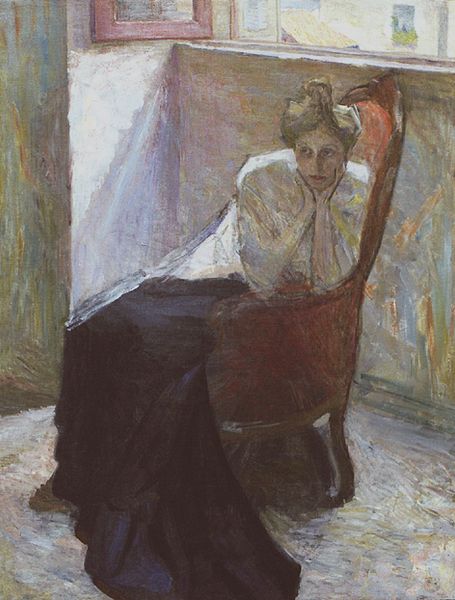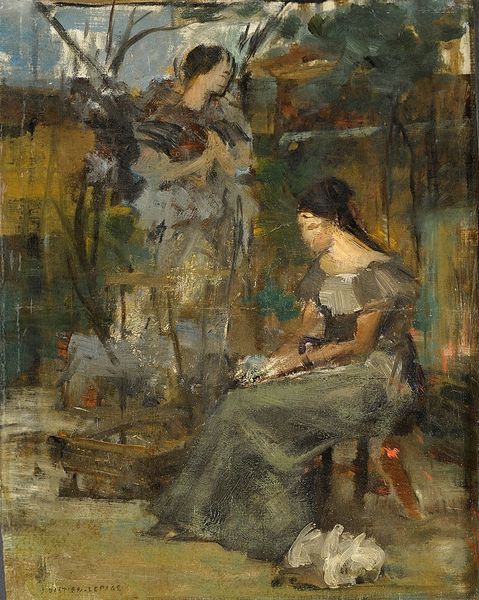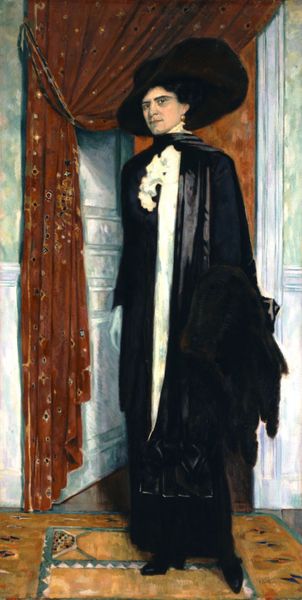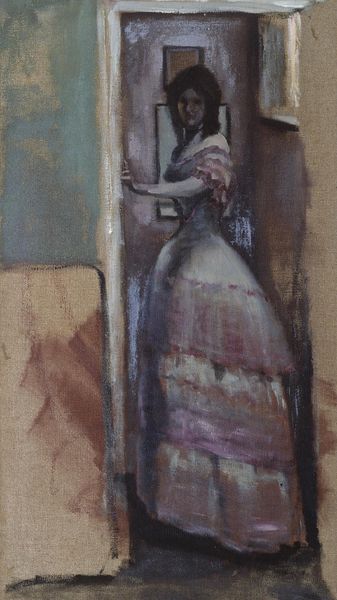
Dimensions: 138.5 x 77 cm
Copyright: Public domain
Editor: Vincenzo Irolli’s "On a Rainy Day (April)," created in 1946 using oil paint, presents a poignant figure standing against a window. The colors are muted, creating a somber mood. What stands out is how vulnerable she looks. How do you interpret this work? Curator: I'm drawn to the layering of societal anxieties expressed through this seemingly simple scene. Think about the era: post-World War II. This figure embodies the precariousness of childhood innocence amidst upheaval. Is she sheltered or trapped? The rain itself can symbolize cleansing, but also sorrow. Considering gender studies, do you see how her small figure might be interpreted as emblematic of feminine vulnerability during such turbulent times? Editor: That's interesting. I hadn’t considered the post-war context so explicitly, but that definitely shifts my perspective. I was mainly reacting to the visible brushstrokes. Curator: Exactly. And think of the Romantic tradition. Her interior state is externalized by the scene. But within that, we should ask questions like, "Who had access to this form of art during this period?" This might broaden our thinking about art history as an academic pursuit rather than the experience of ordinary people. Editor: That really opens up new avenues of interpretation. Considering the intended audience for this piece offers a new understanding of art, by relating visual aesthetics to social, political, and class dynamics. Curator: Precisely! Understanding the context helps reveal unspoken truths and forgotten stories imbedded in visual culture. Editor: I hadn’t thought about it quite like that before. Thanks. Curator: My pleasure! There's always more to uncover.
Comments
No comments
Be the first to comment and join the conversation on the ultimate creative platform.
